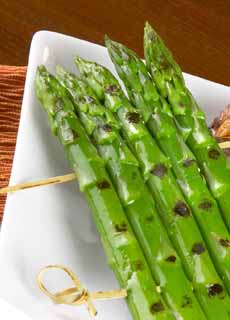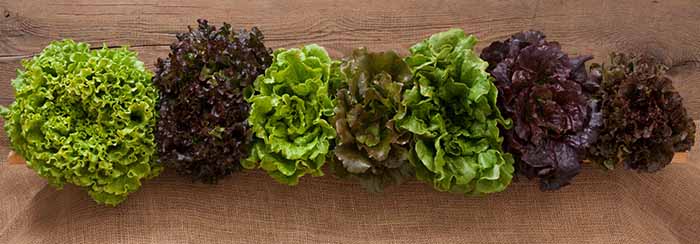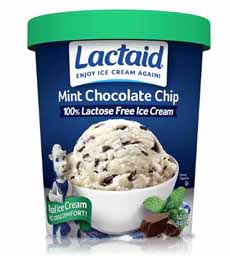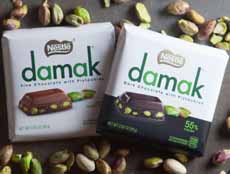
[4] The ubiquitous head of iceberg lettuce, also known as crisphead or head lettuce. Just quarter it for your wedge salad (photos #3 through #6 © Good Housekeeping).

[5] Boston lettuce, a variety of butterhead lettuce.

[6] Red leaf lettuce, a variety of leaf lettuce.
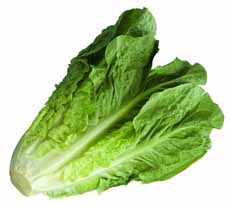
[7] Romaine lettuce. While second in popularity to iceberg in the U.S., romaine is the winner in almost every nutrient category and has higher levels of vitamin A, K, and folate.

[8] Stem lettuce, also called celtuce (photo © Vaacnee | Amazon).
|
|
DIY WEDGE SALAD BAR
At THE NIBBLE, we’ve added a lot to the simple wedge salad. Call it a DIY, customized, or signature wedge salad, it’s a fun munch.
The Must Haves
Iceberg lettuce wedges
Cherry tomatoes
Creamy dressings: blue cheese, thousand island/Russian, ranch
Nice Additions
Avocado
Bacon, any type (the different types of bacon)
Cheeses: crumbled blue cheese or feta, shaved parmesan
Croutons
Veggies: peppadews or pimentos, red onion or scallions
Watercress
For A Main Dish
Hard-boiled egg halves (the quarters tend to fall apart)
Ham or turkey, julienned or cubed
Garnishes
Fried Chinese noodles
Frizzled onions
Fresh herbs (basil, chives, dill, tarragon)
Nuts and seeds: candied walnuts, pepitas, spiced pecans, salted peanuts, or any toasted nuts
THE DIFFERENT TYPES OF LETTUCE
There are four basic types of lettuce: butterhead (photo #5), iceberg (photo #5), leaf (photo #6), and romaine (photo #7), along with hundreds of hybrids bred from them.
Iceberg Lettuce: Also known as crisphead lettuce, iceberg is the most popular type of lettuce in the U.S. It’s the crispest and hardiest of lettuce varieties, lasting twice as long in the fridge as long as most other varieties. The downside: It’s not as flavorful or nutritious as other lettuces.
Butterhead Lettuce: Comprising Boston and Bibb Lettuces, these are small, loosely formed heads of soft, supple leaves. Boston is a larger and fluffier head than Bibb; Bibb is the size of a fist, and sweeter than Boston. Both are excellent for lettuce cups. The leaves are sweet and tender. The downside: They’re highly perishable and bruise easily, and are pricier than iceberg and romaine.
Leaf Lettuce: Also known as looseleaf, cutting or bunching lettuce, this category does not form a head. Instead, the leaves branch up from a single stalk. The leaves are very tender and are often seen in baby lettuce blends. The burgundy tint of red leaf lettuce and the spicier, nuttier oak leaf lettuce add charming color to a mixed green salad. The downside: Leaf lettuces are more perishable than head lettuces and wilt easily. They are used mainly for salads.
Romaine Lettuce: Second in crunchiness to iceberg lettuce, romaine, also called cos, is a stalk lettuce that grows in upright stalks. The crunchy center ribs make the leaves sturdy, and they have a pleasant bitterness. Romaine is used mainly for salads and sandwiches, and is the lettuce used in Caesar Salad. When the outer leaves are trimmed, the smaller ones (sold as hearts of romaine) can be used as “boats” to hold protein salads (egg, chicken, tuna, etc.).
Summercrisp Lettuce: Also called Batavian or French crisp lettuce, this variety falls midway between iceberg and leaf lettuces. They are very crisp like romaine, but sweet and juicy, without bitterness (photo #9, below). The shape of the summercrisp plant is initially open, much like a loose-leaf lettuce. It then matures into a heavy, compact bunch or head.
Stem lettuce: Also called celtuce, celery lettuce, asparagus lettuce, or Chinese lettuce (among other names), stem lettuce is grown primarily for its thick stem rather than for its leaves (photo #8). The stalk is used in Asian cooking (primarily Chinese), as well as stewed and creamed dishes. It can also be shaved into ribbons for a salad. In a salad, the leaves are indistinguishable from other lettuce. The stems are traditionally stir-fried in Sichuan cooking. Prized for its woody stem, which looks like a thick asparagus stalk or wasabi root, celtuce has a nutty, cucumber-ish flavor. The stem can grow to 10-12 inches in length.
|











